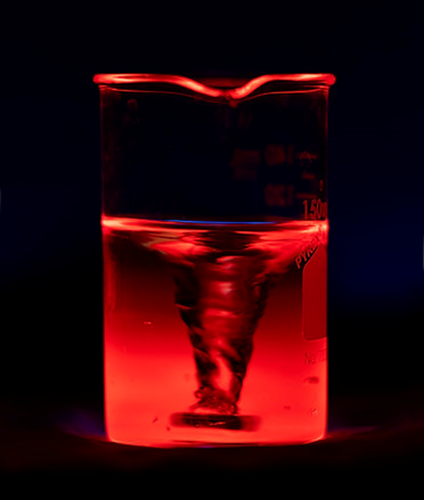Strategic Area
Energy – Technology and Innovation
Advanced Materials & Bioproducts
Status
Completed
Partners
Alberta Innovates
All Weather Windows Inc.
PCL Contractors
Fund
Clean Growth Program
Year
2019
CGP Contribution
$ 700,000
Project Total
$ 1,650,042
Location
AB
Find out more
Lead Proponent
Applied Quantum Materials Inc.
Project Background
The objective of the project is to convert ordinary glass windows into a scalable luminescent solar concentrator (LSC) or distributed energy generation unit. To do this, the project developed and integrate nanocomposite coatings that guide light to the windows edge to be absorbed in PV arrays. The goal was to convert ordinary glass windows into a functional energy generation unit that can be integrated into the building’s structure.
LSCs represent an effective way to improve the operating efficiency and lower the cost of PV systems without using complex tracking and cooling equipment. An LSC concentrates both direct and diffuse sunlight and guides it by total internal reflection to PV cells located inside the window frame. The project focused on incorporating advanced nanomaterials for the conversion of our greatest primary energy source, the sun, into renewable, low carbon electricity and consequently reduce GHG emissions and land disturbances from solar farms.
Results
A new co-polymer nanomaterial window coating was developed incorporating silicon quantum dots. Key achievements included the use of novel coating techniques, a 3% conversion of light to energy (limited by solar cell efficiency), and over 70% glass transparency.
Other milestones included:
- Researchers synthesized silicon quantum dots with an appropriate wavelength (800-900 nm) and brightness for demonstration. They recorded the photon emission efficiency via a measurement of quantum yield. A relationship between the size of the quantum dots and the wavelength of photons emitted was identified.
- The quantum dots were functionalized with a variety of ligands to improve the stability and surface compatibility with the polymers and glass surface. The co-polymer functionalized silicon quantum dots ultimately developed showed a quantum yield range of 40-53%.
- The creation of an LSC waveguide prototype through experimentation with glass coating and dilution techniques. The project team experimented with airbrush, drop casting, and ultrasonic automated spray setups and compared the results with respect to thermal stability, transparency, uniformity, humidity, and resistance to cracking.

Silicon Quantum Dots (siQDs) in Solution.
- The simulation of an optimized luminescent solar concentrator. Contracted Nemsor Technologies Inc., and the University of Alberta, Department of Mechanical Engineering to investigate factors including glass type, glass and film thickness, nanoparticle size, light scattering models, and quantum yield.
- The integration of the LSC with a PV system. Following simulation, the optimized 30 x 30 cm LSC design was assembled with a strip of “high efficiency” solar cells around the edges of the glass. Testing revealed that the solar cell efficiency was lower than advertised, measured at 11% rather than 21%, limiting the observed conversion efficiency to 3% compared to the set target of 5%.
Benefits to Canada
Environmental Benefits: Expected GHG reductions and reduced land disturbance.
At scale, this project is expected to produce sustainable low cost, solar energy for buildings. The project will result in reductions in landscape disturbances as building facades are used for solar farms instead of valuable land. Luminescent solar concentrators have the potential to serve as a new source of alternative renewable energy that will lessen the demand for traditional power generation and transmission contributing to major reductions in GHG production.
This project supports the expansion of the Canadian led industry and the potential export of advanced materials for the solar industry.
Next Steps
Currently, new model window frames are being fabricated, additional coating techniques are being explored.